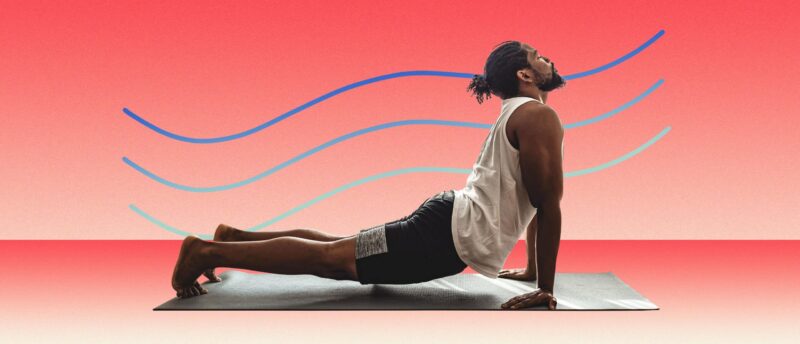Embarking on a journey through the ancient practice of yoga offers a myriad of benefits, both physical and mental. However, one question often arises: “How frequently should one engage in this discipline?” The answer is not one-size-fits-all; it requires a deep understanding of personal needs, lifestyle, and goals. This blog post delves into how you can adapt your regimen to fit your life, ensuring it enriches rather than overwhelms.
Understanding Your Body’s Needs
The journey to understanding what your body truly needs from yoga begins with attentiveness and self-awareness. It’s essential to recognize that this practice isn’t merely a physical exercise; it’s a holistic approach to well-being that encompasses mental, emotional, and spiritual health. For some individuals, engaging in yoga daily can significantly enhance flexibility, reduce stress, and improve overall mood. For others, a more moderate approach, perhaps practicing three times a week, might be more sustainable and equally beneficial.
The key is to closely observe how your body and mind respond after each session. Feelings of rejuvenation, increased energy, or a sense of calmness are indicators that your practice frequency is aligned with your body’s needs. Conversely, persistent fatigue or soreness may suggest the need for adjustment. Listening to your body’s subtle signals is paramount in determining the most beneficial yoga routine for you.
Setting Realistic Goals

When embarking on a yoga journey, setting realistic and clear goals is crucial. These goals can vary widely among practitioners: some may seek to improve flexibility, others to cultivate a sense of inner peace, and yet others might aim to build physical strength or endurance. Your specific objectives will significantly dictate the frequency and intensity of your practice. For instance, if reducing stress and enhancing mental clarity are your primary goals, incorporating short, daily sessions focused on breathing and meditation can be incredibly effective.
On the other hand, achieving physical milestones, such as mastering a challenging pose or building muscle tone, might require longer sessions that are spaced out to allow for muscle recovery and growth. It’s important to tailor your practice frequency to your personal goals, ensuring that each session brings you a step closer to achieving them. This alignment not only maximizes the benefits of your practice but also keeps you motivated and engaged over the long term. If you have your goals already set you can then click here.
Balancing Consistency and Rest
Finding the perfect balance between consistent practice and necessary rest is a delicate dance that is crucial for a sustainable and rewarding yoga journey. Consistency lays the foundation for progress, helping to gradually improve flexibility, strength, and mental focus. However, the importance of rest and recovery in this equation cannot be overstressed. Adequate rest periods allow the body to heal, prevent injuries, and assimilate the benefits of the practice more fully.
This balance will look different for everyone; while some may thrive on daily practice, others may find that their bodies and minds benefit most from a schedule that includes several days of rest between more intensive sessions. Incorporating rest days or lighter practice days into your routine is not a sign of regression but a vital component of a holistic and healthy approach to yoga. It’s about listening to your body and respecting its limits, ensuring that your practice remains a source of joy and rejuvenation rather than becoming a burden or a source of injury.
Tailoring Yoga Frequency to Your Schedule

Integrating yoga into your daily life requires a realistic assessment of your schedule and commitments. For those with demanding jobs or family responsibilities, finding an hour each day for practice may seem daunting. Instead, consider shorter, more frequent sessions that can be easily woven into your routine, such as a 15-minute practice in the morning or during a lunch break.
The aim is to make yoga a non-negotiable part of your day, akin to eating or sleeping. Flexibility in practice length and frequency ensures that yoga enhances your life without becoming another stressor. Remember, the goal is to support and enrich your lifestyle, not to overhaul it completely.
Incorporating Yoga into Daily Routines
Making yoga a seamless part of your daily routine can transform it from a task to a cherished habit. This might mean practicing sun salutations as a wake-up ritual or winding down with gentle stretches before bed.
By associating yoga with specific daily activities, you anchor it in your routine, making it easier to maintain consistency. Additionally, integrating mindfulness and breathing exercises into mundane tasks, like commuting or doing chores, extends the benefits of your practice beyond the mat, fostering a continuous connection to the principles of yoga throughout your day.
Adjusting Practice Intensity

The intensity of your yoga sessions should reflect both your physical capacity and daily energy levels. Some days, a vigorous vinyasa flow might feel invigorating; on others, a restorative session could be more appropriate. This adaptive approach prevents burnout and injury, ensuring your practice is always nourishing.
It’s also beneficial to vary the focus of your sessions, alternating between strength-building, flexibility, and relaxation, to develop a well-rounded practice that addresses all aspects of your well-being.
Listening to Your Body’s Signals
Attuning to your body’s signals is crucial for a responsive and beneficial yoga practice. This means recognizing when to push for progress and when to ease back. Signs of discomfort or strain should not be ignored but rather seen as communication from your body, guiding your practice. This self-awareness fosters a deeper connection with your body, enhancing the personal growth and healing potential of your yoga journey.
By adopting a flexible and mindful approach to your yoga practice, you can ensure it serves your needs and complements your lifestyle, rather than becoming a source of pressure or frustration. This adaptability not only makes your practice more sustainable but also more enjoyable and rewarding in the long run.
Related Posts:
- 12 Signs Your Business Should Start Working With a…
- What are Toric Contact Lenses? Here's What You Need to Know
- How Long After Cataract Surgery Can You Drive: Eyes…
- How Do You Check if a Website is Not Working: 2024 Guide
- Wondering About Your Car's Past? Here's How to…
- How Sex Toys Can Transform Your Bedroom Dynamics:…















